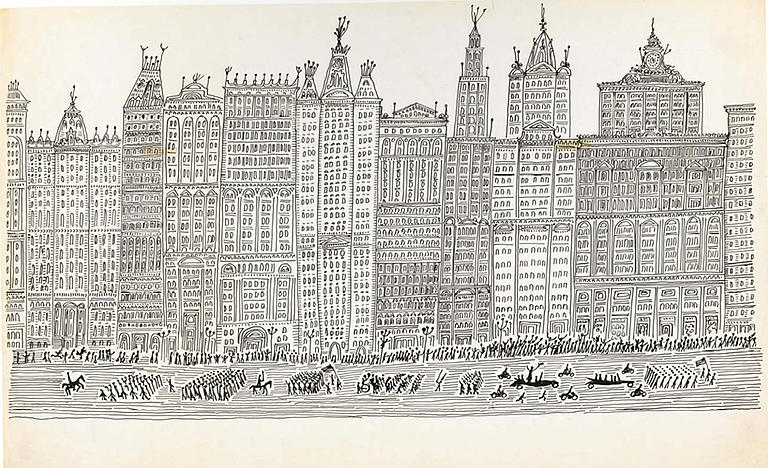Constructed Nature II
Lines: Lange Erlen, Basel

Lange Erlen is a most extraordinary constructed landscape at the heart of Basel. The Atlas produced last semester has documented a complex landscape of epic technicity combining and conflating mechanical instruments, water and railway infrastructure, with woodland, agriculture and the everyday life of the city. Last semester’s interventions have showed new ways of seeing, using and transforming the landscape of Lange Erlen. Small points were matched by great landscape transformations providing a foundation for responding to the needs of an expanding city.
We will continue the study of Lange Erlen in collaboration with Professors Jacques Herzog and Pierre de Meuron in larger scale proposals for housing to provide much needed densification of Basel. We shall follow their mantra to ‘build on the built’. But as the deeply layered nature of Lange Erle has shown, the built and the unbuilt are ambiguously united. We shall search for opportunities to densify the city through grafting housing into the remaining voids, unfinished settlements or abandoned infrastructure while reinforcing the existing landscape setting.
Points and lines and space
Having looked at the landscape of Lange Erlen as a field defined by points, this semester we shall focus on the line. A line goes; it has direction. Extended straight it gets from A to B in the shortest possible distance and asserts an edge. When cranked or curved it embraces or encloses; it takes the long way, creates more surface and more spaces and responds to what is already there. A line also separates one condition and another. It creates boundary and threshold. And within the thickness of the line architectural space can be created and inhabited. The architectural line implies scale, repetition and articulation rendered in construction. Cities and territories are made of lines whether in the profile of a cornice or in the transition from town to landscape.
Our task for this semester will be to design large scale housing around the edges of Lange Erlen. Studio projects will be matched at a smaller scale with the densification in garden at ETH. With Spring approaching, previous planting and constructed elements will be supplemented and enriched with planting perennials that will add spatial definition, depth and complexity to the existing structures. Whether at the scale of the city as it will be in Basel, or hands on in the garden both projects will examine the relationship between individual and collective action and experience. We intend to work as architects but with the care of a gardener in Lange Erlen and to seed like gardeners with spatial intensions of an architect in the garden.
Atlas of lines and construction
We begin the semester by expanded the Atlas of Lange Erlen with an Atlas of linear housing references. We will examine the relationship between construction and the landscape it defines. Seminal housing projects of the first halve of the 20th Century in and around Lange Erlen have been documented in the first Atlas. These local examples will be supplemented by housing studies from around Switzerland and internationally. The Modernist housing fecund in Basel will also be drawn out into history and recent built examples.
Design projects will focus on experiential and technical lines through materiality and construction. The studio will continue its primary concerns with tectonics and forms of urban and architectural bricolage started in the garden structure last semester. We will emphasise physical model making and the duality between the model as miniature building and its presence as an autonomous artefact. Like nature, the city grows with accumulation, repetition and diversification of very small material (and human) actions; construction is the DNA of architecture from which architecture grows.